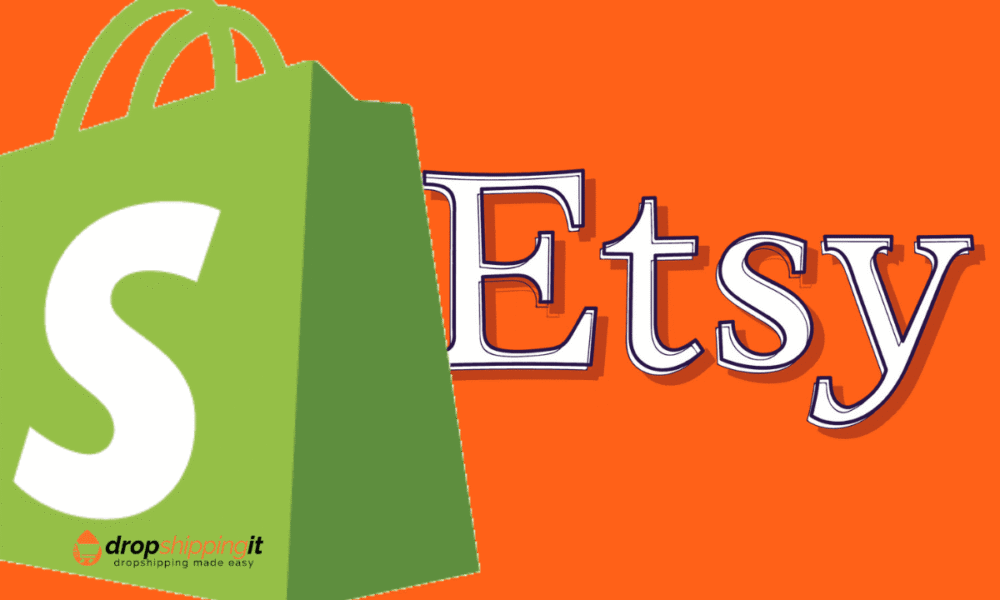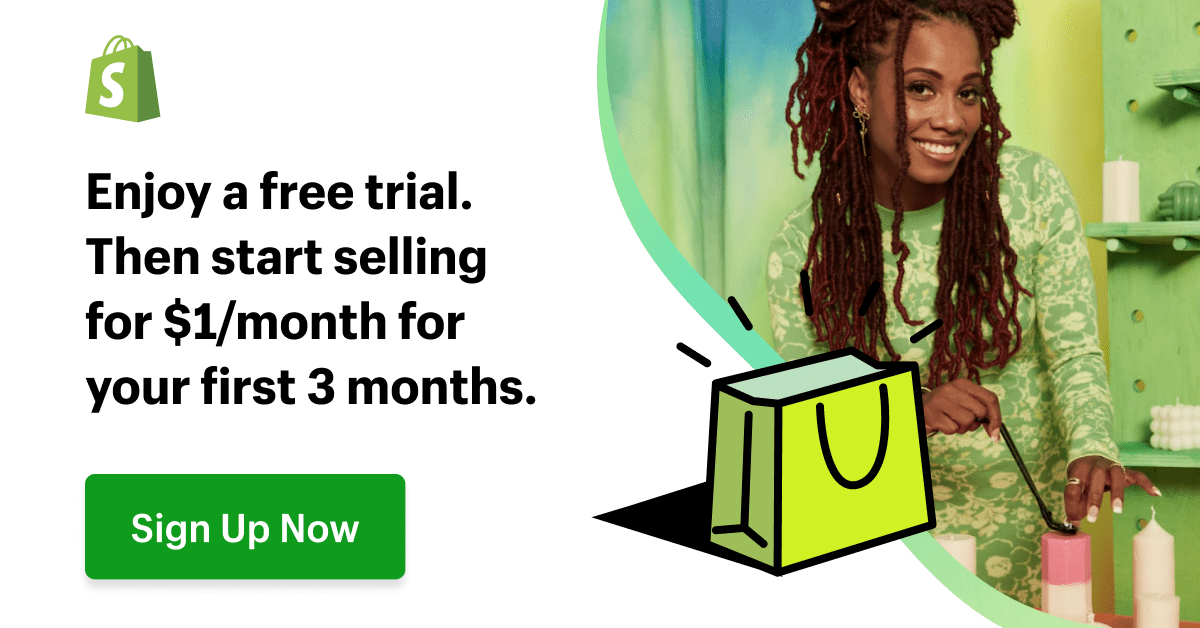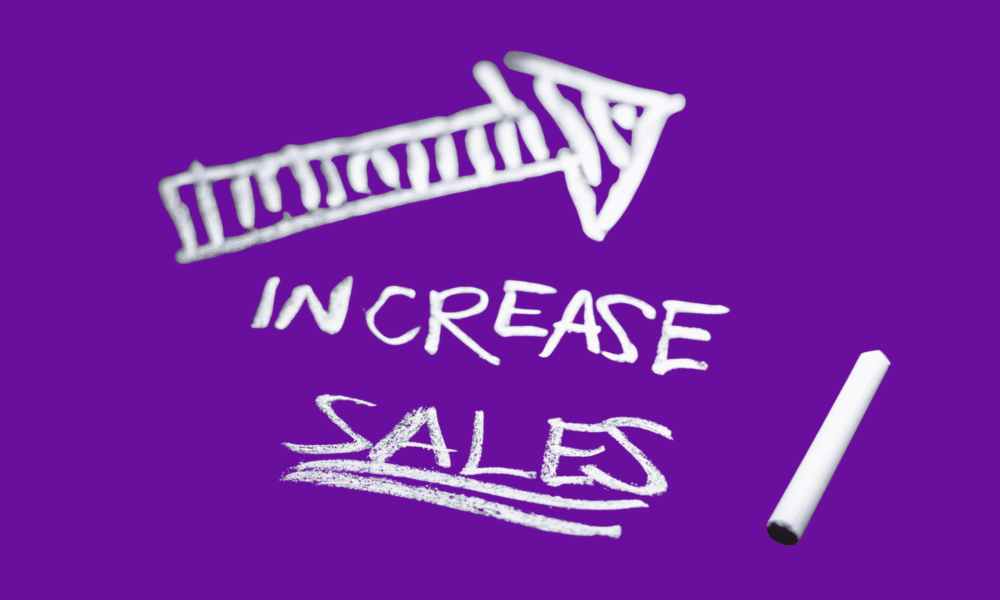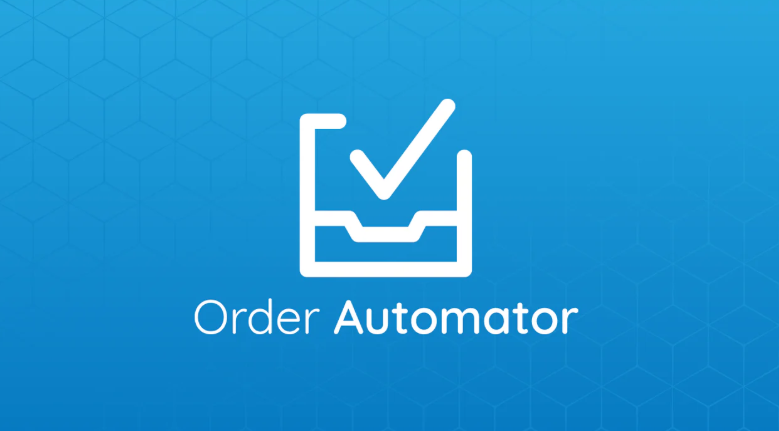If you've ever felt the frustration of managing multiple online accounts, whether…
Shopify vs Etsy: Which One Is Best For Your Business (2026)

The backdrop of this write-up on Shopify vs Etsy is the practicality that comes with such a comparison. It aims to guide you on when to pick and use either platform, providing you with the necessary information to make an informed decision.
As a budding entrepreneur dealing in quintessentially creative items, from handmade figurines and knitwear to quirky print design and anything artsy, Etsy naturally comes to mind for selling crafts. Its unique features and focus on handmade and vintage items make it an intriguing platform to consider. Additionally, consider comparingtsy.
On one hand, we have Etsy, a vibrant marketplace that showcases the work of hundreds of artisans. On the other hand, Shopify offers you a platform to host your own website, providing a unique shopping experience for your customers.
Regardless of your budget, understanding the services and tools that Etsy and Shopify offer, as well as how their features compare, is crucial. This knowledge will empower you to make informed decisions that benefit your business.
With that hindsight, let’s get right into the gist of this review: Shopify vs Etsy.
Table of Contents
Shopify vs Etsy: What’s the Difference Between the Two?
First off, a snap overview of who’s Shopify? Who’s Etsy? And what do these platforms offer? Read on to learn about Shopify vs. Etsy.
Shopify offers a standalone, customizable platform for building a branded online store, providing complete control over branding and marketing, but requiring you to attract customers yourself.
Etsy is a marketplace focused on handmade, vintage, and craft items, providing sellers with access to a large existing customer base but with less branding control and higher transaction fees.
The best choice depends on whether you prioritize building a custom brand and have marketing experience (Shopify) or want to leverage a built-in audience and are selling specific types of goods (Etsy).
Etsy Introduction
As an eCommerce marketplace, Etsy has several online merchants on its storefronts.

All the retailers on Etsy have something in common: all their products are of an artistry and crafty nature, thus making Etsy a niche marketplace. Etsy is involved in the buying process of your shoppers, both front and center.
Etsy has an unusual twist: they sell everything: “handcrafted, vintage, or unique.” The model has since proven efficient, with nearly 2 million merchants on the platform selling to over 33 million buyers worldwide.
The platform is open to sellers of all sizes—small or large, thus acting as an entry-level shopfront; therefore, Etsy perfectly suits new sellers with limited stock and unique wares. So read Shopify vs Etsy.
Pattern by Etsy
Besides enabling the creation and publication of listings on its marketplace, Etsy also offers an eCommerce platform, Pattern by Etsy. Here, you can create your website and sell items for free for the first 30 days. After this period, you will be billed $15/Month.

Pattern by Etsy is an add-on for those already selling through Etsy, and so, you won’t find a sophisticated or customizable platform as you would with Shopify. However, it comes with fewer restrictions compared to those on the Etsy marketplace.
Shopify Overview
Founded in 2004, Shopify is an eCommerce website builder that lets you build your online storefront whose design is entirely to your liking. Shopify enables you to define your brand, market your brand, and showcase your products.

Shopify offers hundreds of integrations, thereby expanding your store’s functionality and enabling integration with various software. This feature is particularly useful if you already use multiple programs to manage your online store.
On the Shopify platform, merchants sell thousands of products to millions of people worldwide. Shopify has processed over $100 billion in transactions. The platform is well-suited for both smaller and larger businesses.
The Fundamental Differences
To highlight the key differences between Shopify and Etsy, consider the following.
You open a boutique store where you have to attract and grow your customer base. Shopify is for you, whereas Etsy is akin to taking your crafts to a fair and then showcasing them at a booth for craft enthusiasts to see.
Now, at great depth, let’s examine the slight differences between these platforms.
Read Also:
- Modalyst vs Oberlo: What’s The Best Dropshipping Alternative?
- Modalyst vs Dropified: Which App Is Best For Dropshipping?
- Modalyst vs Spocket: Should You Install Both Or None?
Merits & Cons
First up is Etsy, and we’re off.
Etsy Merits
- Exposure: Etsy comes with an existing customer base right from day one. You can thus leverage Etsy’s popularity to attract visitors to your store.
- Ease of Use: Upon setting up an account, you proceed to upload products, product info, and images, and start selling immediately.
- Low cost: Aside from the transaction and listing fees that you’d pay, on Etsy’s standard plan, you won’t have to pay additional monthly charges. So, Etsy is a palatable entry-level platform for anyone looking to experiment with selling online.
Etsy Cons
- Absence of creative control: You can not modify your branding or alter the look of your storefront. Equally, you’ll have limited control over your shoppers’ purchasing process, and generally, there are fewer tools to grow your following.
- Transaction fees: These fees account for 5% plus $0.20 listing fees. The costs can quite significantly eat into your profit margins, especially once you start generating more sales.
- Product Restrictions: Etsy has a lid on what you can and can’t sell. They specialize in niche products, unique vintage, and handcrafted goods. And therefore, a digression outside this sphere is out of the question.
Shopify Merits
- Unlimited Products: There are no limits to what or how you can sell, from Physical products to services to digital products.
- Robust eCommerce tools: With Shopify, you get one of the best toolsets for sales in the market, including an in-built inventory system that syncs, tracks, and monitors your orders and stock levels.
- Scalability: Shopify is suitable for a wide range of stores, from small brands to large businesses. Upgrading provides access to additional features, allowing you to add extra plugins and customize your branding.
Shopify Cons
- Exposure: With Shopify, you won’t receive much help; customers must search for you, or you’ll need to leverage other methods, such as email marketing, Facebook, and Google Ads, to get in front of your target audience. That means that without an existing consumer base, it could take some time before traffic is seen.
- Cost: Apps & plugins could see a spike in monthly fees. For smaller businesses, the prices may spiral beyond their budgets.
Ease of Use
Both Etsy and Shopify offer a simple and natural feel for eCommerce merchants.

You can easily design and manage your store with Shopify’s comprehensive and user-friendly toolset. Also, Shopify will hold your hand through the entire process of setting up your online store, including but not limited to:
- Menu
- Tracking your orders
- Syncing your inventory
- Action buttons
Shopify appears more technical due to its extensive range of features. Although both platforms are well-documented, new sellers should have little to no difficulty setting them up and running.
On the other hand, Etsy is simple to use. First, it isn’t as comprehensive as Shopify.
You’ll sign up, upload your products and product information, and then you’re set.
You’d need to upload at least one product during the signup process to set up an Etsy store.
The process requires a lot of information, and it may take some time. However, the details apply to other products and prompt you to set up your shipping process, which can also take a while. All in all, Etsy/s overall setup process takes less time than Shopify’s.
If you’re looking for a faster and easier way to start selling online, Etsy has the edge over Shopify.
Customization & Design
Attractive and natural web design is a crucial cornerstone for the success of any eCommerce store. Unappealing-looking sites often deter visitors; therefore, it’s essential to customize your store’s appearance strategically.
Shopify
Shopify sits at the top end, offering a wide range of options for design and customization. You gain access to the backend of your website, featuring more than 60 themes for selection.

With 50 being premium and 10 free, the themes come optimized to cover various industries. Several of the templates feature zoom-in capabilities that are particularly useful for clothing or furniture shops. Once you have opted into a theme, you can personalize, modify, and rearrange it to your liking.
You risk of throwing off your design with excessive customization, especially if you are not a designer or intend to enlist the services of one. However, you shouldn’t stray too far from the rails, thanks to Shopify’s diverse and captivating themes.
Etsy
With Etsy, customization starts and ends with you uploading your logo. This way, you won’t have to fuss too much, as minimal customization is advantageous to those lacking in web design skill sets.

But most entrepreneurs with a clear vision of what an ideal store would look like find it frustrating. Minimal customization means your listings get less of your personality oomph, and your brand won’t stand out-massive downside right there.
Shopify’s the winner as far as customizability is concerned. The platform makes it easy to customize and build your store.
The Domain & URLs-How do People Find Your Store on the Web?
As you may have correctly presumed, with Etsy, you don’t use your domain. Instead, your shop is a subdomain of the Etsy marketplace and looks something like www.etsy.com/shop/’ your-store-name.’
It’s a convenient way to sell without paying for your domain, especially if you want to keep it small and tidy. You probably don’t want to run your website, so an online marketplace might suffice.
A domain of your own is a crucial part of building your branding.
You must register and use your domain as a home on the web for the storefront you create with Shopify. Again, Shopify is impeccable for launching your brand. However, it comes with extra costs that arise from rights to domain and hosting.
Shopify’s structured web design signup simplifies the hosting and payment process.
Yet again, Shopify runs away with the victory as regard URLs and domain.
Hint: To make your store more natural to search, pick something memorable, short, and snappy.
Pricing & Payment Plans
The price of running an eCommerce store calls into consideration a few probable pitfalls. There are platforms with seemingly transparent monthly subscription fees.
Yet, there are hush-hush costs that should capture your attention like listing fees, transactions, and apps providing additional functionality.
Shopify
Despite its higher upfront costs, Shopify has more to offer regarding functionality and customizability, which is a pivotal aspect of scaling your business.

Besides the 3-Month Free Trial for $1, Shopify presents three pricing plans for selection.
- ‘Basic’ Shopify: At $29/Month, the plan comes with a blog, an eCommerce, multichannel selling, access to 24/7 customer support, you get to register two staff accounts, and list unlimited products.
- Shopify: At $79/Month, you can upgrade to five staff accounts, professional reports, lower credit rates, POS extras, and gift cards.
- Advanced Shopify: At $299/Month, this plan comes with 15 staff accounts, lower credit card rates, and advanced report builder and third-party calculated shipping rates
Etsy Platform
With its Etsy’s standard plan, you won’t incur a monthly charge, but expect a $0.20 listing fee on every product. The fee covers the publishing of your listing, which remain active for months or at least until the wares get sold.
The fee is akin to what you’d incur in securing a table at an art fair. Also, there’s a 5% transaction fee along with 3% +$0.25 for payment processing per item you sell meaning with high order volume; the costs have the potential of eating into your profit margins.
Although the eCommerce industry has standardized payment processing fees, Etsy rates slightly surpass the industry’s average. As for small scale selling, Etsy’s transaction costs ought not to substantially dent profit margins, and a monthly subscription would easily balance the cost of operating an eCommerce store.
Not unless you are sure whatever you intend on selling is fast-moving and not a hard-sale, you shouldn’t put your money on the line because on Etsy; you only get charged when you make a sale.
At $10, you can purchase Etsy Plus, which comes with added functionality. And a quick rundown on Etsy’s standard fees entails:
- A 5% transaction fees
- A 3%+$0.35 payment processing fees
- A $0.20 listing fees per every product
- No monthly charge
- A $10/Month to upgrade to Etsy Plus
Shopify’s ‘Basic’ plan is considerably cost more than Etsy; however, it’s worthwhile, especially when you need added functionality. The ‘Basic’ plans give access to all that you’d need in= efficiently running a small to a midsize eCommerce store.
Shopify’s higher tier perks often provide greater scalability for big brands’ staff.
Payment Options
Shopify has an array of payment alternatives for selection, as well as its internal payment gateway known as Shopify Payments.
You won’t incur transaction fees with Shopify payments except for a card processing fee starting at 2.9%+$0.30 on ‘Basic’ plan. This fee is inversely proportional as you upgrade to higher-tier plans say Shopify (2.6%+$0.30) and Advanced Shopify (2.4%+0.30).
Considerably, all these transaction fees are cheaper than Etsy’s. Among the other payment gateways offered by Shopify include but not limited to Pay Pal, Google Pay, Stripe, and Apple Pay.
And a quick rundown on Shopify’s plans & fees look like:
- Monthly plans running from 429 to $299Shopify offers a remarkable of payment methods for selection.
- Zero transaction fees on Shopify payments
So, on the pricing comparison front, who comes out on top?
Shopify undoubtedly offers superior options as regards payment, transaction fees, and of course, you’d need to incur at least $29/Month to crack these options.
On the whole, we have a stalemate in terms of pricing between the two. Shopify offers tremendous value for money, and signing up to its plans essentially encompass all needed in running an eCommerce store,
But for a small merchant, you want to leverage Etsy to sell your products at cut-price. In light of your needs, both platforms priced reasonably and offer excellent value for money.
Their eCommerce Toolset & Features
Etsy comes with easy-to-use yet robust eCommerce tools to help market and grow an online presence. Etsy toolkit has all that you’d need in managing an Etsy online shop with ease.

Sellers always on the run will find ‘Sell on Etsy app’ useful in managing their store. Also, the platform comes with marketing and Ad tools that you can latch on to get found online, attract new followers, and increase your customer base.
Further, you get to share your Etsy store on social networks like Twitter and Instagram along with third-party tools like Google Shopping, thus ramping up your exposure.
Moreover, Etsy lets you create and manage coupons, buy and print discounted postage labels, thereby saving on shipping costs. An upgrade to Etsy Plus expands the scope of your toolset to provide:
- Ads credits
- Discounts on marketing stuff like business cards
- Email alerts to notify customers as soon as an item is back in stock.
- More options to customize your shop, like banner templates
- Transact on your domain name
Etsy’s premium plan compensates for some of the downsides already highlighted, but ultimately, the tool remains simple and not as comprehensive as its competition.
For instance, with Etsy, you’d have to track and manage your stock since Etsy doesn’t come with an inventory management tool.
Shopify, on the other hand, is famous for its extensive and quality online features; thus, an ideal option for a business looking to promote, market, and grow its brand.
Thanks to Shopify’s fantastic app store, you get to add any additional functionality you’d need along with an already existing resourceful toolset.
And so, below is a list of some of the features all Shopify perks offer:
- A built-in blog
- An abandoned cart recovery tool
- Shopify POS app
- Discount codes
- Fraud analysis
- Gift cards
- Free SSL certificates
- Guest checkout
- Third-party calculated shipping rates.
- An inventory and order management tool
- SEO tool
- Multichannel selling tools across ten different social media platforms
The free SSL certificate is a signature of website safety for visitors; thus, you build trust and credibility with your prospects.
The multichannel selling tool makes buying experience more accessible, and also, you can use it to grow your customer base.
Abandoned cart recovery helps with luring back customers that were on the verge of making a purchase, but for whatever reason, left the checkout page.
The inventory tool system lends Shopify an edge over Etsy, and as such, you can upload merchandise in bulk or one at a time, manage, track stock, and analyze your sales.
And again, based on features solely, Shopify comes out on top. But of course, all these extra tools come at an additional cost. Therefore, it’s critical to evaluate both platforms, think through the features you’d probably use.
Else, you have no reason paying additional functionalities you have no use for, isn’t it? Etsy’s ‘Basic’ toolkit suffice to sell small amounts.
Help & Support
Regardless of Shopify and Etsy’s user-friendliness, you’ll likely need some customer care down the line, especially newbies in eCommerce. In this section, we’ll contrast the customer support standard of both Shopify & Etsy.
Etsy
Etsy has a Help Center laid out plain and simple with a search function that assists you in finding answers to your queries. Equally, you can join Etsy’s forum discussions, ask questions and benefits.

For further assistance, Etsy allows phone call scheduling or send an email to support staff.
Shopify
Shopify provides support via video tutorials, email, forums, and social media profiles, all of which are crucial in tackling common questions and issues. Also, Shopify comes with 24/7 phone and live chat; thus, you can call them up whatever the hour you’d encounter a problem.
Shopify has a straightforward and easy to use Help Center. It comes with an array of articles and guides to walk you through most issues. Shopify editor lends access to this resource, and it’s here you find the Help menu that redirects you right into the relevant page in the help center.
Shopify’s higher tier perks provide access to advanced specialist support, often best suiting big brands.
Further, Shopify’s forum platform cuts across several industries. As such, the active community probably encountered a similar issue already; the solution likely lies in one of the forum’s threads. And as such, you don’t want to smirk at the platform.
Overall, as Etsy offers excellent customer support, Shopify has a somewhat more responsive 24/7 support, and you can get through a real-live assistant almost asap.
Who wins? Shopify takes home the Help & Support trophy.
Shopify vs. Etsy: Growing Your Business & Attracting Customers
A steady flow of customers equals a thriving online store where your products so to speak fly off the virtual shelves.
You can easily get lost amidst a sea of competition. And therefore, a look at how Shopify and Etsy can help you grow your audience potentially provide insights into navigating this fate.
Etsy
You can draw privilege with Etsy shining a spotlight on your shop. With more than 33 million buyers hunting for handmade wares and designs, your products get an instant exposure from buyers with an appetite for what you are offering.
With more than 50 million products, there’s zero guarantee your store will stick out to buyers on Etsy’s marketplace. And so, eliciting interest here is challenging, primarily because of Etsy’s limited customization options.
Shopify
Since you won’t get the privilege of an existing audience typical of the marketplace, Shopify comes loaded with a plethora of tools to promote your store. You’ll need social media presence, run your marketing campaigns, and mailing lists.
The entire SEO is in your hands, which means your ability to market your brand is critical in scaling the store’s growth.
As a pro with experience, Shopify has all the resources you’d need at fingertips. And Shopify makes it easy to get started for newbies to online marketing.
Shopify offers plenty of guides, apps, and tools you can leverage in the execution of digital marketing campaigns, which could include building and growing an email list or multichannel selling.
Although Shopify comes across as more work, the autonomy you exercise over your brand and marketing efforts balances that off. Put it another way; you’re not subject to the whims of the algorithmic marketplace. Instead, growing your business calls for a hands-on approach.
On the evaluation of the platform’s capacity to draw customers automatically, Etsy takes the day. For small enterprises, it might just suffice to get their brand noticed right from the get-go. As for nurturing traffic, you won’t get that with Shopify.
All told, Shopify offers more control in creating an exceptional presence online; however, as is the case with all good things, tons of grits, patience, and analytics go into drawing Etsy’s kind of traffic to Shopify platform.
User Reviews
Under the Shopify review spotlight, the platform soak-up in glowing tribute as concern its ease of use, scalability, and functionality.
Users slam Shopify over the additional cost brought about by its several add-ons. Users also decry that should Shopify Payments become inaccessible; they’d have to pay processing fees alongside monthly expenses.
Etsy merchants experience the privileges that come with a simple setup process and exposure to a broad audience.
However, some users decry Etsy’s noninvolvement in controlling seller behavior. Complaints have since emerged that Etsy shifts culpability between buyers & sellers abstaining from taking proactive steps in disputes.
Neutrality at times winds up in deterioration of Etsy merchant’s trust on the platform.
Also, today the market is just a highly saturated-a breeding ground for cut throat competition. And as such, selling on Etsy currently proves complex contrasting a couple of years back.
Security
On either platform, you don’t have to concern yourself with online security because both Shopify and Etsy are PCI compliant systems, providing extensive site SSL certificates.
Even with Etsy’s Pattern, the transactions still must go through the Etsy platform, so you’d benefit from Etsy’s stringent security every time you make a sale.
Which is the Best Pick?
Basing on what we have gathered so far, in this section, we’ll conduct a quick rundown on the comparison we’ve made up to these points on these two platforms.
- Shopify has a more diverse toolset and features.
- Shopify offers a 24/7 live chat & phone support superior to Etsy’s rigid customer support system.
- Shopify offers a vast, more customizable, and allows users to design their brand.
- Shopify lets you use your web domain, whereas an Etsy store invariably remains a subdomain of Etsy.
- Shopify comes with more payment options for selection.
- Etsy is an online marketplace for artsy products, while Shopify is an eCommerce store builder best-suiting any business size and industry.
- Etsy doesn’t charge monthly fees, but Shopify gets more cost-effective on account of higher monthly income.
- Etsy on its online marketplace draws 33 million customers, whereas, with Shopify, you’d need to build your brand and drive your website traffic.
Growing or larger enterprises get value for money in using Shopify, given the platform’s scalability. However, as we’ve already mentioned, there are several grounds why smaller sellers would opt into Etsy.
Not everyone has the time to take advantage of all the features and customization offered by Shopify nor the approximately $30/Month on launching their business on Shopify. But based solely on benefits & functionality, Shopify runs away with the victory on the comparison.
When to Use Shopify?
Of course, Etsy makes for a restrictive fit for growing enterprises with a considerable inventory. But Shopify offers a high-quality inventory system, and so, you get to track and analyze your stock.
The solution also provides you the legroom, using your web domain to build a brand and market your business.
Shopify is a worthwhile option for your business because the monthly subscription fees eventually crystallize into a valuable investment on account of decent monthly income.
Also, Etsy restricts selling to just arts & crafts niche. Still, the Shopify platform allows sellers to be diverse out of selling other items; thus, making Shopify the best-suited solution for those looking to branch out for arts and crafts.
Without a doubt, Shopify is worth considering for a seller looking to grow into a larger brand selling thousands of various products. And so, on Shopify, you can kiss goodbye the hassle of switching from Shopify to another platform because it grows as you scale up the business.
When to Use Etsy?
If you are making your products, it’s highly probable at that first you won’t have a substantial catalog, and each piece is likely unique. Therefore, new sellers with minimal inventory, handmade, and unique products should make Etsy their first call.
Etsy’s ease of use will perfectly suit your needs so long you only deal in occasional handcrafted items that way, catering for all the needs of a small and creative business.
Etsy store incurs zero up-front costs to sell your products online. Etsy links your store to an audience already with an appetite for the products you are creating, and as such, Etsy makes for a low-risk model for sellers, unsure how well their products will do.
Using Etsy & Shopify
If you are yet to cast the dice on the two, there’s an alternative with which you don’t have to settle for either. Fortunately, the Shopify App Store makes integrating Etsy’s marketplace with your Shopify store an easy process.
And rest assured, you don’t experience confusion between the two stores because the integration process syncs your orders and the inventory in real-time.
In the first 7-days, you can use this plugin free of charge, after which you’ll incur $60 monthly. The plugin lets you upload unlimited products to both Etsy and Shopify stores.
Although the option may not suit the merchants on a low budget, the entrepreneurs willing to make substantial investments in their businesses get the best of both worlds.
While using Etsy’s marketplace to diversify your online presence, equally, you get to customize, grow, and brand your store in reaching the pre-existing Etsy’s massive audience, a win-win.
Etsy as a Bridge
There is no cause for alarm! Even when it isn’t possible to commit a substantial investment, perhaps currently, Etsy best suits your low budget, and there’s no barrier to leveraging the model as a stepping stone. You can later build a Shopify store once you start making a decent bottom line with the Etsy store.
Perhaps you are currently importing handcrafted items via Etsy, building a customer base with an interest in your brand, and then converting those same customers to your new Shopify store.
Final Word
At first, the two solutions come across as similar, but I bet after this piece, you’ll have a unique idea where the two contrast and in which aspects each platform sparkles.
And because Etsy is free, we’d root for it since it costs nothing to experience the platform’s vibe and find out whether it best suits your needs. Also, for the same reasons, Shopify’s 90-days free trial is worth a shot-at.
Give them both a try and whichever you opt for, let’s know in the comments section below. We wish nothing but the best in your online selling journey.
Thank you for reading Shopify vs Etsy, if you have any comment or questions post them below.
Bring your business ideas to life for $1/month On the Shopify Platform. Click the Image Below.





Comments (0)